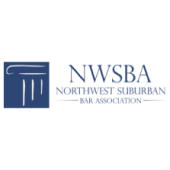Signaling Safety for Crane Work
I’m Ron Wittmeyer, and today we’re going to talk about crane signaling safety on a construction site.
A qualified signal person
First of all, OSHA requires that only a qualified signal person may give signals to a crane operator. And here’s how OSHA defines a qualified signal person: That person must know the OSHA regulations and the OSHA standard hand signals. And that person must have a basic understanding of crane functions.
Also, that person must have demonstrated their qualifications. What that means is that the person must have demonstrated their qualifications as a signal person to either a third party evaluator or someone employed by the signal person’s employer. And that evaluation must be documented in the employer’s records.
The standard OSHA hand signals
Number one, a stop is signaled with one arm extended and waving the hand back and forth.
An emergency stop is signaled with both hands extended and waving the arms side to side.
Important note: With one exception, only the designated signal person is allowed to signal the crane operator. The exception is an emergency stop. Anyone on the job site can signal the crane operator to make an emergency stop.
OSHA hand signals continued
- The signal for raising the boom is an arm extended, with the fist closed, and the thumb pointed up.
- The signal for lowering the boom is just the opposite, with the arm extended and the thumb pointing down.
- The signal for a telescoping crane to extend the boom is holding the hands at waist level with the thumbs pointed out.
- The signal for retracting the boom is just the opposite, with the hands at waist level, and the thumbs pointing in.
- The signal for swinging the boom is to extend the arm, with the index finger pointed in the direction that you want the boom to swing.
- The signal for hoisting or raising the load is your hand extended overhead with the index finger just drawing a circle.
- The signal for lowering the load is the arm at a 90-degree angle and drawing a signal to lower the load.
The importance of crane signaling
As you can see, crane signaling is very important in safely moving loads on a construction site. What’s crucial is the coordination between the crane operator and the rest of the crew involved in the lift. And that means communication.
Construction sites are often very noisy places, so voice commands don’t work. Sometimes, they don’t even work over radios. So the standard OSHA hand signals are necessary in order to have good lines of communication. This increases safety at the job site when there are crane operations going on. If you have any questions, feel free to shoot me an email.












